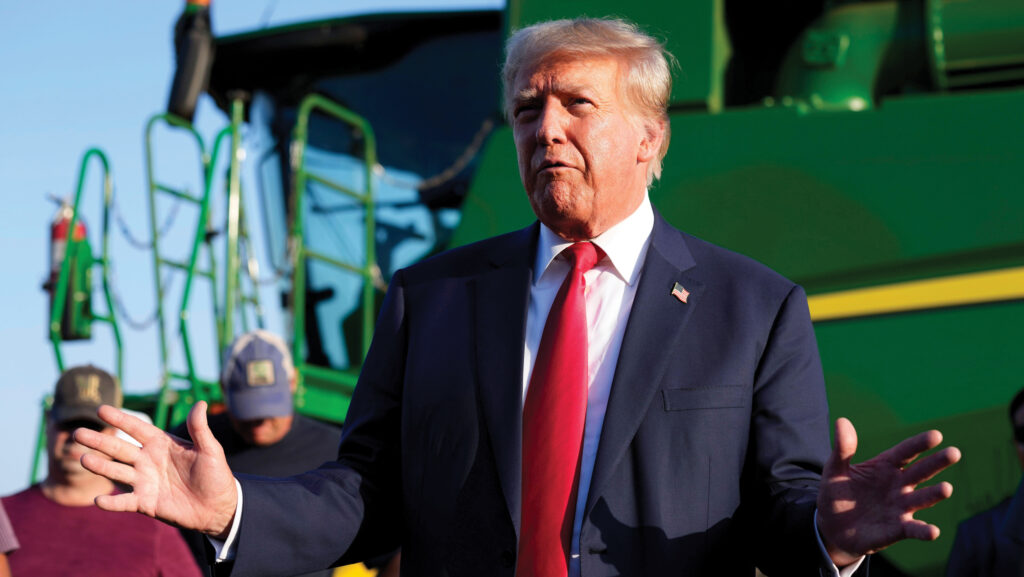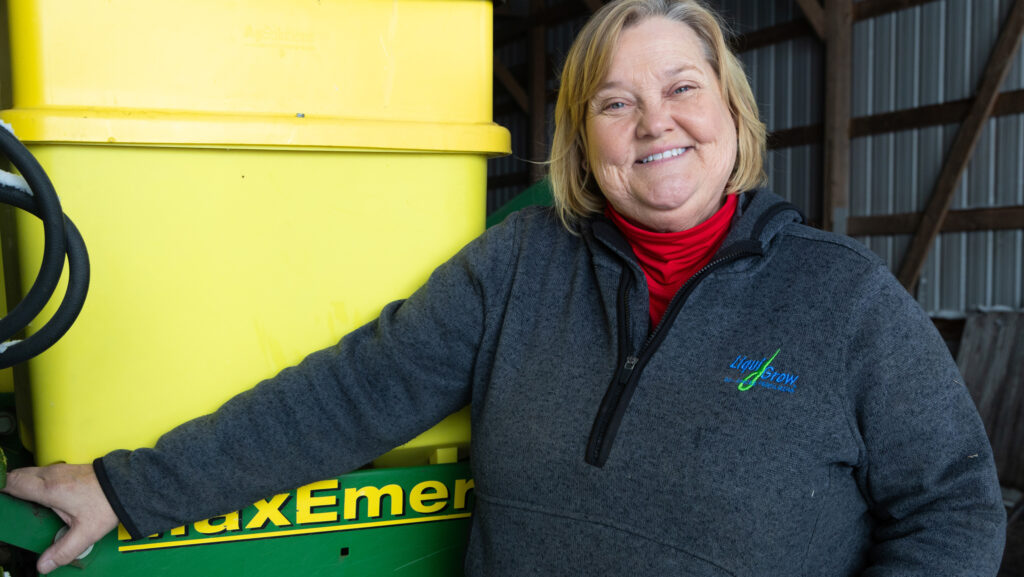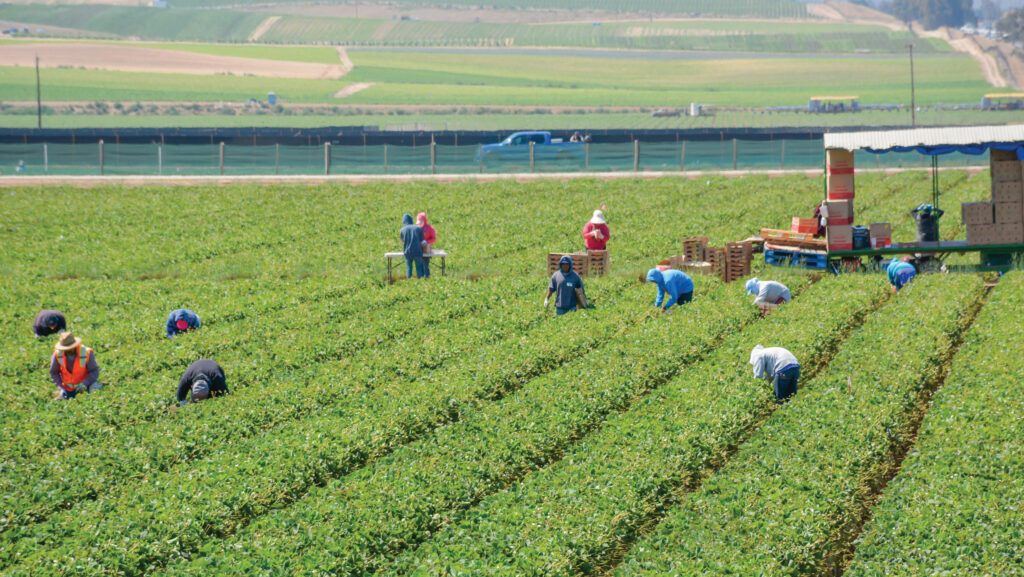Is Trump’s fondness for US farmers truly reciprocal?
 Mr Trump’s pro-farmer messaging mixes praise with trade and financial support © Alamy Stock Photo
Mr Trump’s pro-farmer messaging mixes praise with trade and financial support © Alamy Stock Photo Nine years after Donald Trump first gained the support of voters in rural America, farmers remain one of his most reliable voting blocs.
But scratch below the surface, and his second term is proving far from straightforward for the sector.
In the shadow of revived trade tensions with China, immigration enforcement in states dependent on migrant labour, cuts to federal grants and departmental staff, and tumbling commodity prices, farmers are cautiously watching to see what will happen next.
See also: President Trump defends ‘death tax’ exemptions for farmers
A lot of them believe Mr Trump will come to their rescue as he did during the 2018-19 trade war, when the administration introduced payments totalling $23bn (£18bn) to offset tariff losses through its Market Facilitation Program.
But others are fearful the latest dramas are going to have a lasting effect on farm businesses.
“The trade war with China has destroyed our markets for soybeans, and it’s going to have a long-term impact,” says Charles, an Iowa corn and soya bean grower, who asked not to be identified.
“China has found alternative supplies of soybeans from Brazil, and Brazil is going to be in there forever.”
Looking at the figures, he seems right to be concerned. According to World Bank data, soya bean prices have fallen to about $410/t (£320/t), down 13% year-on-year and the lowest since 2020.
At the same time, fertiliser, fuel and other input costs have risen sharply, leaving crop values well below the cost of production.
“A lot of farmers have a negative cashflow, they’re going to lose significant sums of money,” says Charles. “But they’re just waiting to see what happens. They think Trump will come through for them.”
Cost increases
Other farmers are equally relaxed in the face of low prices, having seen how quickly markets can change.
On Monday 11 August, the president wrote on his social media platform, Truth Social, urging China to “quickly quadruple” purchases of US soya beans.
In response, Chicago futures jumped more than 2%, briefly lifting contracts back over $10/bushel – equivalent to £288/t.
“When our president posts something on social media about China buying soybeans and the price goes up 40 cents a bushel, you really can’t have a sound marketing plan,” says April Hemmes, who farms 400ha of corn (maize) and soya beans in north-central Iowa.
While Ms Hemmes accepts that current trade tensions are part of the ups and downs of farming, she says tariff “pass-throughs” are hitting her costs.

April Hemmes © Gil Gullickson
“This autumn and early next year is when tariffs will affect farmers the most,” she predicts.
“Fertiliser comes from Canada, chemicals from China and some equipment parts are made in Mexico. So our costs will increase while our commodity prices are at or below cost of production.”
Those margins could become even tighter after USDA World Agricultural Supply and Demand Estimates released on 12 August put national corn production at a record 16.7bn bushels – about 425m tonnes – for 2025-26.
Yields were estimated to be at a record 188.8 bushels/acre (12.6t/ha), some 13% higher than last year.
Flat demand
Edward Usset is a grain marketing economist at the University of Minnesota’s Centre for Farm Financial Management.
He says record production typically depresses prices further, especially when global demand is flat, an issue compounded by heavy old-crop stocks.
“We’ve had no good opportunity to price new crop grain, and a lot of last year’s crop is still in storage,” he says. “Prices have been below the cost of production for more than a year.”
Mr Usset says soya beans set life-of-contract lows earlier this year, and corn recently touched its lowest value in years.
“China has made a commitment in the last year to do as little [trade] as possible with the US,” he says, adding that US soya bean sales this season are the lowest in 20 years for this point in the calendar.
“Brazil is going to continue to fill the void.”
Yet even in the face of falling profits, political attachment to president Trump and his policies remains.
“Farmers overwhelmingly voted for Donald Trump the first and second time,” says Charles in Iowa.
“They forgave the loss of trade with China [in 2018-19] because Trump sent them money. They think that Trump is going to send us some money and save us again.”
Workforce woes
In the west of the country, labour policy is also complicating the outlook for producers.
California’s high-value fruit, nut and vegetable sectors depend on seasonal migrant workers, many of whom lack legal status.
The Trump administration’s decision to ramp up migrant enforcement over the past year prompted some workers to disappear from fields, creating uncertainty ahead of harvest.
“[We’re] urging a common-sense, compassionate approach to immigration enforcement on farms,” says a California Farm Bureau spokesman.
Regulatory costs have increased by almost 1,400% in less than two decades, the bureau adds, with the state failing to deliver “a sensible regulatory structure” that’s practical or affordable for producers.
The organisation says it has participated in several meetings with White House staff and agency officials, and is lobbying on workforce issues, disaster assistance, trade, and other challenges.
Planning for volatility
However, not all farmers are concerned. Dean Houghton, a pig and arable farmer in Missouri, says the pressure on his business is “uncomfortable, but survivable”.
“There has been a long-term trend of sideways to down [in commodity prices] while our costs are sideways to slightly up, so we are continuing to get squeezed… but it’s not what I would call economically critical,” he says.
Tariff threats on steel briefly pushed farm equipment quotes higher, but eventually the local market settled and prices rolled back.
“Volatility is just part of farming,” he adds. “Markets go up and down, you can’t just react to every headline. If you plan well and manage your costs, you can ride these things out.”

Mexican immigrant farmworkers in California © Jennifer Wright/Alamy Stock Photo
For Mr Usset, there is little hope of market relief before harvest, however, unless a supply shock emerges somewhere else in the world.
“A big carry in the market [might offer] an opportunity for a producer to store grain on the farm and sell for a higher price for forward delivery,” he says.
“But that is still not going to get them a price above production costs.”
Political and economic split
All of this reinforces the split between politics and economics.
Nationally, farmers remain largely Republican, and the majority are sticking with Mr Trump, even while there are doubts about his use of tariffs as a negotiating tool.
In March, 54% of respondents to a poll by AgWeb, a US farming news site, said they did not support the president’s use of tariffs, although 41% said they did.
That view sits alongside the widespread belief that the White House will find a way to cushion farm incomes if things get bad enough, just as it did during the 2018-19 trade war.
So do American farmer believe Mr Trump has their best interests at heart?
In the Midwest, at least, the answer – electorally – remains yes. “Support is the same as far as I can see with farmers,” says Ms Hemmes.
Charles agrees, but warns the economics are biting businesses hard. “We’re going to lose money,” he predicts. “It’s going to be tough.”
Support for continued estate tax exemptions
Estate tax (equivalent to inheritance tax in the UK) is one area where Donald Trump’s farm policies remain popular.
During his first term he more than doubled the federal exemption to $13.61m/person, meaning fewer than 0.3% of farm estates have paid the tax in recent years, according to official data.
Several states still levy their own inheritance or estate taxes.
This rather flies in the face of Mr Trump’s exaggerated claims made in a press conference in Scotland in late July that he had scrapped the tax altogether.
The federal exemption thresholds have, however, been on an upward trajectory.
They were raised from $3.5m/person to £5m/person under the Barack Obama administration in 2010, then $11.18m/person under the first Trump presidency in 2018.
It is set to rise again to $15m next year under the One Big Beautiful Bill – recently signed into law – exempting even more farmers from the so-called “death tax”.
The California Farm Bureau says it backs a total repeal of estate tax, warning that it “serves as a hindrance for those wishing to keep generational farms going”.
However, most in the industry say it has been largely irrelevant for more than a decade. Given the relatively low price of land in the US, it is far from pernicious.
